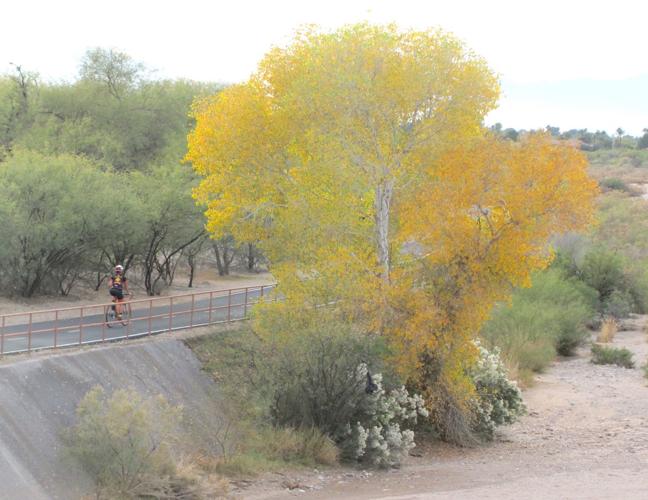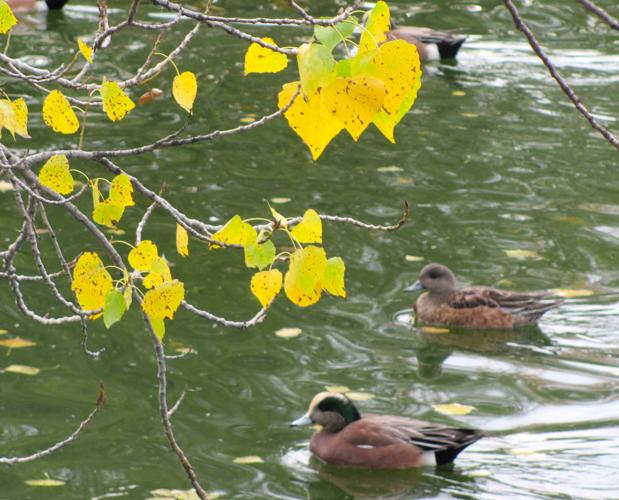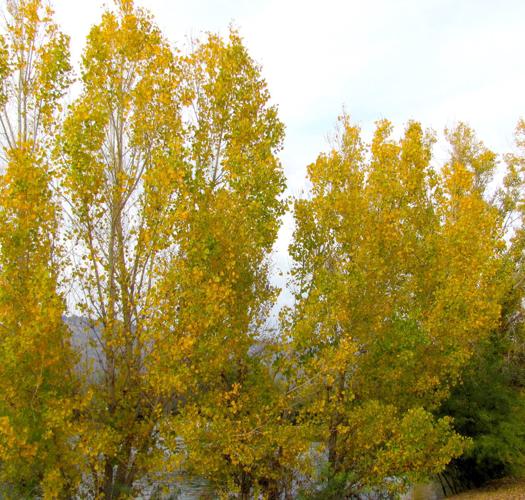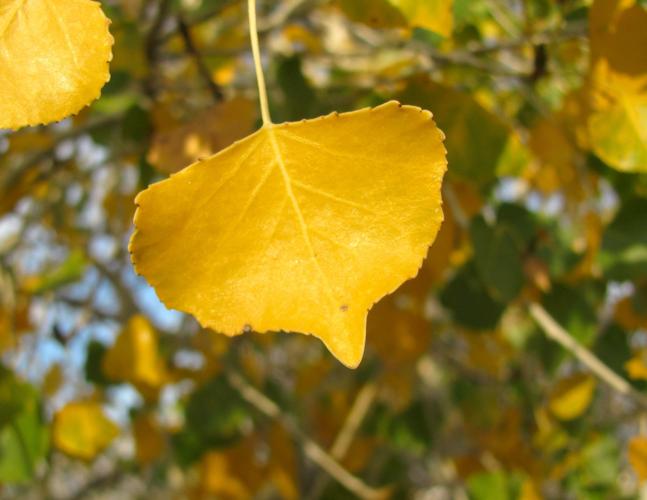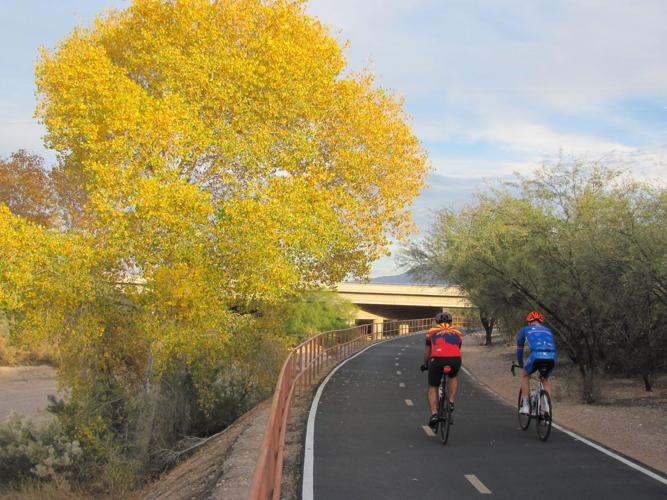Winter is barely a week away but — as you might have noticed — we’re just hitting the peak of autumn in the Tucson urban area.
Many trees along watercourses and in city parks are glowing with golden hues of fall long after the autumn color of aspens and maples has faded in nearby forested mountain ranges.
The stars of the urban autumn spectacle are Fremont cottonwood trees that show brilliant yellow leaves in December.
The trees, which are native to the Southwest, often grow near rivers and washes. They can reach heights of more than 100 feet and have heart-shaped leaves.
You might wonder why the leaves of cottonwoods change from green to golden yellow this late in the season in the Tucson valley — long after most leaves in the forested mountains have lost their luster.
It’s because cottonwoods are deciduous and their leaves turn yellow when cooler weather stops chlorophyll production, according to botany experts. The cooler weather arrives a little later in the valley than in mountain ranges.
Other plants that often show late-autumn color in the Tucson area include velvet ash trees, sycamores and wild cotton.
FIND URBAN AUTUMN COLOR
Here are some places to see autumn hues in the Tucson area:
- The Rillito River near North Craycroft Road. Look for cottonwood trees on either side of the Craycroft Road bridge over the river.
- Along a stretch of Tanque Verde Creek between North Craycroft Road and North Sabino Canyon Road. For close-up views, walk the creek bed when it is dry and rain isn’t in the forecast.
- Segments of other watercourses including the Pantano Wash and Santa Cruz River often have color at this time of year.
- Fort Lowell Park at North Craycroft Road and East Glenn Street.


